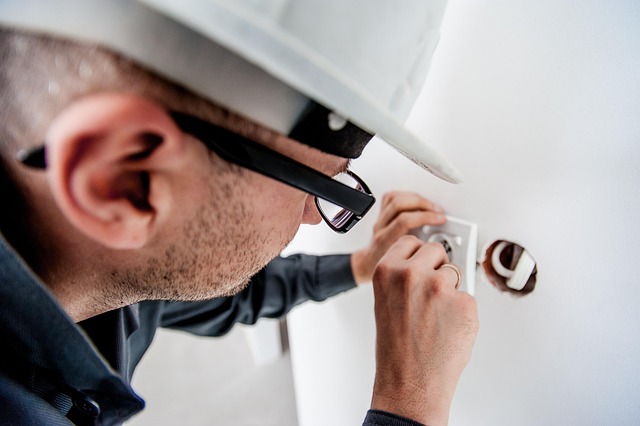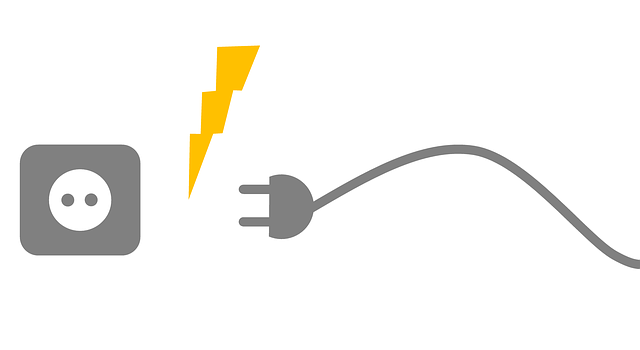Electricians replace old fuses with modern circuit breakers for enhanced safety and system functionality. Circuit breakers handle higher currents, automatically interrupt overloads/short circuits, offer better protection, are easier to reset, reliable, and cost-effective. Replacing fuses involves locating the electrical panel, turning off power, removing old fuses, installing new circuit breakers matching ratings, testing, and reactivating power. Electricians prioritize safety by using PPE, de-energizing circuits, voltage testers, maintaining workspace, and securing cables.
Looking to upgrade your home’s electrical safety? It’s time to replace those old fuses with modern circuit breakers. This guide, tailored for electricians, delves into the world of fuses and circuit breakers, highlighting their distinct roles and benefits. We outline a straightforward process for replacing outdated fuses while emphasizing crucial safety precautions. Discover why making this switch is a game-changer for both homeowners and professionals alike, ensuring a safer, more efficient electrical system.
- Understanding Fuses and Circuit Breakers
- Benefits of Modern Circuit Breakers
- Steps to Replace Old Fuses
- Safety Precautions for Electricians
Understanding Fuses and Circuit Breakers

Fuses and circuit breakers are both essential components in electrical systems, but they serve different purposes. Fuses are designed to protect circuits by interrupting the flow of electricity when an overload or short circuit is detected. They are typically used for low-voltage applications and have a specific amperage rating. On the other hand, circuit breakers are more versatile and suitable for high-voltage systems. They can handle higher currents and offer automatic tripping mechanisms, ensuring quick disconnection during faults.
When it comes to home electrical wiring or maintenance, an electrician plays a vital role in replacing old fuses with modern circuit breakers. This upgrade is not merely about changing the components; it’s a safety measure that enhances the overall electrical system. Electricians are trained to identify suitable circuit breaker types for different applications, ensuring proper installation and functionality.
Benefits of Modern Circuit Breakers

Modern circuit breakers offer numerous advantages over traditional fuses, making them a popular choice among electricians. One of the key benefits is their enhanced safety features. Circuit breakers are designed to interrupt the electrical flow in case of an overload or short circuit, preventing potential fires and electrical hazards. This automatic shutdown capability is particularly valuable in homes and commercial buildings, ensuring the safety of occupants and valuable equipment.
Additionally, circuit breakers provide better protection for modern electrical systems. They can handle higher currents and are more versatile, allowing for easier re-lighting after a trip. Electricians appreciate their reliability and ease of use, as circuit breakers require no replacement or maintenance like fuses do. This cost-effective and efficient solution simplifies electrical panel upgrades and ensures a more stable power supply, enhancing the overall performance and safety of modern electrical installations.
Steps to Replace Old Fuses

Replacing old fuses with modern circuit breakers is a straightforward process that every homeowner or electrician should be familiar with. First, locate the electrical panel, usually found in basements, closets, or utility rooms. Next, ensure the power is turned off at the main breaker to avoid any accidents. With safety glasses on, open the panel and identify the fuse box. Remove the old fuses one by one, taking note of their size and rating.
Once all the old fuses are removed, install the new circuit breakers corresponding to their ratings. Double-check that they fit securely in the designated slots. After ensuring all new circuit breakers are in place, close the panel doors and turn on the main power supply. Test each circuit breaker individually by flipping it to the ‘on’ position and verifying its functionality. This process not only enhances safety but also ensures your home’s electrical system is up-to-date and efficient.
Safety Precautions for Electricians

When replacing old fuses with modern circuit breakers, electricians must prioritize safety above all else. This involves donning appropriate personal protective equipment (PPE), including gloves, safety glasses, and insulated clothing, to mitigate the risk of electrical shocks. Additionally, it’s crucial for electricians to de-energize the circuit completely before beginning work, ensuring no residual current flows through the system.
Using voltage testers and other diagnostic tools helps verify that power has been cut off accurately. Maintaining a clear, clutter-free workspace and securing loose cables further reduces tripping hazards. Adhering to these safety precautions not only protects electricians but also ensures the reliability and longevity of modern circuit breakers in their installed systems.
Upgrading from old fuses to modern circuit breakers is a smart move for any home or business owner. By implementing these advanced safety features, you’re not only simplifying electrical management but also enhancing your property’s overall safety. When it comes to electrical work, hiring a licensed electrician is crucial to ensure the job is done right and securely. Trusting a professional for this task guarantees peace of mind, knowing your electrical system is up-to-date and capable of protecting against potential hazards.
